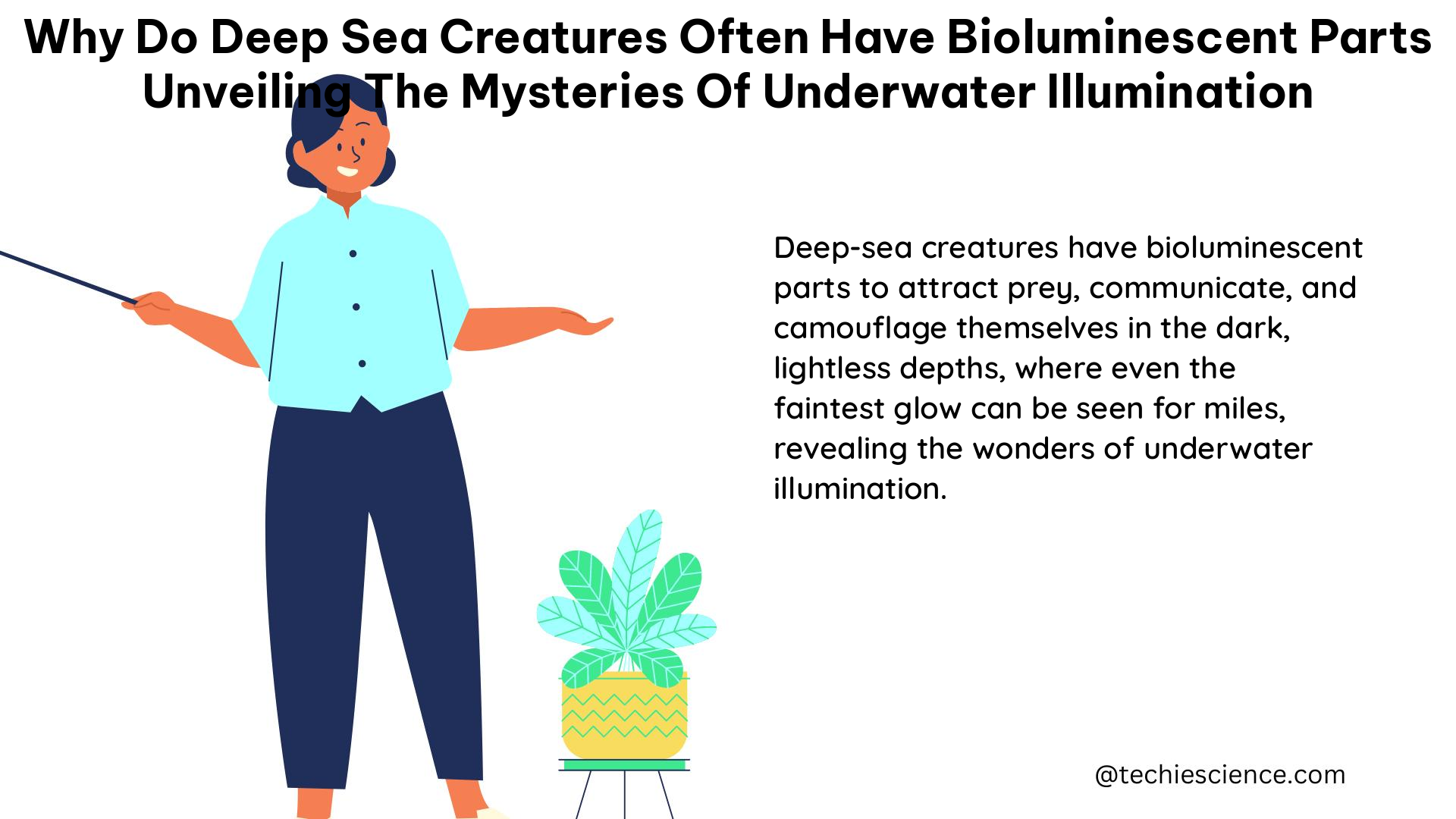Bioluminescence, the natural production of light by living organisms, is a captivating phenomenon that is particularly prevalent in the deep sea. Deep-sea creatures often possess bioluminescent parts, which play a crucial role in their survival and ecological interactions. This comprehensive guide delves into the prevalence, taxonomic distribution, and technical specifications of bioluminescence in the deep-sea, providing a detailed understanding of this underwater illumination.
Prevalence of Bioluminescence in the Deep Sea
The deep sea, a vast and largely unexplored realm, is home to a diverse array of bioluminescent creatures. Studies have revealed the remarkable prevalence of this phenomenon in the deep-sea ecosystem.
Percentage of Bioluminescent Deep-Sea Animals
- 76% of Deep-Sea Animals are Bioluminescent: A study of 17 years of video observations from remotely operated vehicles (ROVs) off the California Coast found that 76% of the observed individuals have bioluminescence capability.
- 90% of Animals Below 500m are Bioluminescent: Scientists estimate that 90% of animals living below 500m in the pelagic zone are bioluminescent.
These staggering statistics highlight the ubiquity of bioluminescence in the deep-sea, underscoring its importance in the survival and adaptation of these creatures.
Taxonomic Distribution of Bioluminescence

Bioluminescence is not evenly distributed across all deep-sea taxa; rather, it exhibits varying prevalence among different taxonomic groups.
Bioluminescence in Major Deep-Sea Taxa
- Cnidarians: More than 97% of Cnidarians (including Siphonophora, Hydromedusae, and Scyphozoa) were found to be bioluminescent.
- Ctenophora: The proportion of bioluminescent and non-bioluminescent animals within Ctenophora changes with depth, with a higher percentage of bioluminescent species in the deeper regions.
- Chaetognatha: Less than 15% of Chaetognatha were found to be bioluminescent.
- Crustacea: The proportion of bioluminescent and non-bioluminescent animals within Crustacea also varies with depth, with a higher percentage of bioluminescent species in the deeper regions.
This uneven distribution of bioluminescence across different taxonomic groups suggests that the ability to produce light may confer specific evolutionary advantages to certain deep-sea organisms, depending on their ecological roles and habitat preferences.
Functions of Bioluminescence in the Deep Sea
Bioluminescence serves various crucial functions for deep-sea creatures, enabling them to thrive in the unique and challenging environment of the deep ocean.
Camouflage
Bioluminescence can be used for counterillumination, a process in which an animal matches the downwelling light from the surface, making it harder for predators to see the animal from below. This camouflage technique is particularly important in the dimly lit deep-sea environment.
Defense
Strong flashes of bioluminescence can startle and distract predators, causing confusion about the whereabouts of the target. This defensive mechanism can provide a crucial advantage for deep-sea creatures, allowing them to evade or deter potential threats.
Communication
Bioluminescence can be used to attract mates or signal alarm. Deep-sea creatures may use bioluminescent displays to communicate with conspecifics, facilitating important social and reproductive behaviors in the vast and sparsely populated deep-sea environment.
Technical Specifications of Bioluminescence
The production and utilization of bioluminescence in deep-sea creatures involve intricate physiological and biochemical mechanisms.
Light-Producing Organs
Many deep-sea creatures, such as the hatchet fish, have specialized light-producing organs called photophores. These organs are arranged in rows or patterns, allowing the animal to control the emission of light for various purposes, including camouflage, defense, and communication.
Bioluminescent Bacteria
Some deep-sea animals, like the Hawaiian bobtail squid, have developed a symbiotic relationship with bioluminescent bacteria. These bacteria colonize specialized light organs within the animal, providing a reliable source of bioluminescence that the host can utilize.
Emission Spectra
The color of the light produced by bioluminescent organisms, known as the emission spectra, is an important characteristic that can vary among different species. Scientists measure and analyze these emission spectra to better understand the specific adaptations and functions of bioluminescence in the deep-sea environment.
Conclusion
The prevalence of bioluminescence in deep-sea creatures is a testament to the remarkable adaptations and evolutionary strategies that have emerged in this unique and challenging environment. By unveiling the mysteries of underwater illumination, we gain a deeper understanding of the intricate relationships and survival mechanisms that govern the deep-sea ecosystem. This knowledge not only satisfies our scientific curiosity but also informs our efforts to conserve and protect these fragile and largely unexplored realms of the ocean.
References
- Haddock, S. H., Moline, M. A., & Case, J. F. (2010). Bioluminescence in the sea. Annual review of marine science, 2, 443-493.
- Widder, E. A. (2010). Bioluminescence in the ocean: origins of biological, chemical, and ecological diversity. Science, 328(5979), 704-708.
- Martini, S., & Haddock, S. H. (2017). Quantification of bioluminescence from the surface to the deep sea demonstrates its predominance as an ecological trait. Scientific reports, 7(1), 1-9.
- Herring, P. J. (1987). Systematic distribution of bioluminescence in living organisms. Journal of Bioluminescence and Chemiluminescence, 1(3), 147-163.
- Martini, S., Michotey, V., Casalot, L., Bonin, P., Guasco, S., Garel, M., & Tamburini, C. (2013). Bacteria as part of bioluminescent consortia in the deep Mediterranean Sea. Marine Ecology Progress Series, 479, 27-40.

The lambdageeks.com Core SME Team is a group of experienced subject matter experts from diverse scientific and technical fields including Physics, Chemistry, Technology,Electronics & Electrical Engineering, Automotive, Mechanical Engineering. Our team collaborates to create high-quality, well-researched articles on a wide range of science and technology topics for the lambdageeks.com website.
All Our Senior SME are having more than 7 Years of experience in the respective fields . They are either Working Industry Professionals or assocaited With different Universities. Refer Our Authors Page to get to know About our Core SMEs.